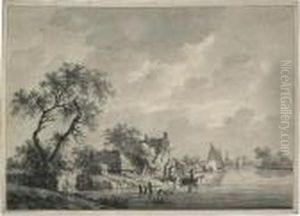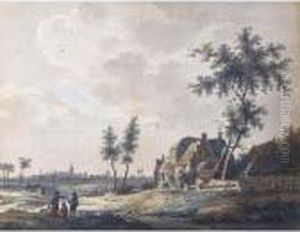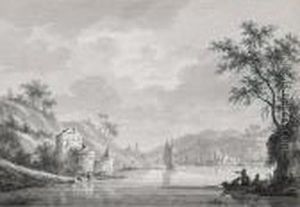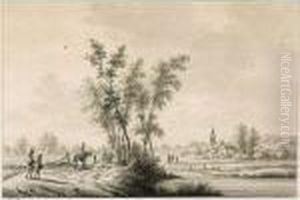Nicolaes Wicart Paintings
Nicolaes Wicart was a Dutch painter and draftsman known for his landscapes, topographical views, and depictions of genre scenes. He was born on June 13, 1748, in Amsterdam, Netherlands. Wicart's artistic journey began at a young age under the tutelage of landscape painter Jan de Beijer. His style was influenced by 17th-century Dutch landscape traditions, but he also incorporated his own observations and a sense of realism into his works.
Wicart's career developed during a period when the Dutch Republic was going through significant political and economic changes. Despite the challenges of the times, he managed to create a niche for himself, particularly with his detailed and accurate topographical drawings and watercolors. These works not only served artistic purposes but also had practical applications for cartographers and engineers of the time.
Throughout his lifetime, Wicart traveled extensively within the Dutch Republic, capturing the essence of the countryside, cities, and towns. His works often featured riverscapes and cityscapes, with a keen eye for daily life and the activities of the local populace. This attention to detail and the ability to convey the atmosphere of a place made his work valuable not only as art but also as historical documentation.
Despite his contribution to Dutch art, Nicolaes Wicart did not gain the same level of fame as some of his contemporaries. However, his work has been appreciated for its accuracy and craftsmanship. Wicart's legacy lives on through his art, which provides a window into the Dutch landscape and society of the late 18th century. He passed away on March 30, 1815, in Utrecht, Netherlands. Today, Wicart's works can be found in various museums and private collections, appreciated by those who have an interest in the Dutch Golden Age and its influence on later periods of Dutch art history.













































